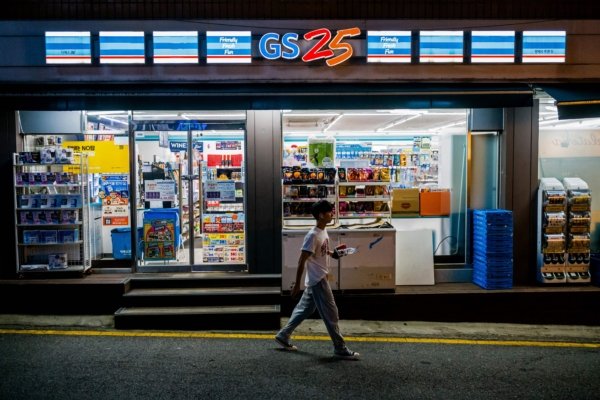In the past twenty years, South Korean exports have been popular worldwide, from K-pop, Korean dramas to beauty products, fashion, and food. Over the past year, Korean fans have shifted their focus to Korean convenience stores. Videos about Korean convenience stores have gone viral on social media.
In these videos, influencers showcase the instant noodle section, review various snacks and drinks, or follow internet trends by consuming only convenience store food all day. These videos have millions or even tens of millions of views.
Why are Korean convenience stores so popular? Because they are incredibly convenient: firstly, they are one-stop shops, offering everything from food and drinks to household items and lifestyle services.
Customers can not only charge their phones, pay water and electricity bills, withdraw cash, shop online, and pick up packages here, but in some places, they can also charge electric scooters, exchange foreign currency, and even send international mail.
Convenience stores have seating areas, microwaves, and hot water dispensers, making them the preferred choice for office workers to have fast food lunches, night owls to recharge late at night, and students to replenish energy before intense study sessions.
Deloitte South Korea stated in a 2020 report that Korean convenience stores “provide great convenience” to customers.
Locals, influencers, and tourists are flocking to the rapidly growing number of convenience stores across the country for various reasons.
According to CNN, based on statistics from the Korean Convenience Store Industry Association, as of the end of last year, South Korea’s 52 million population had over 5,520 convenience stores, meaning there is approximately one convenience store for every 950 people. This number surpasses the total number of McDonald’s branches worldwide, making South Korea the country with the highest convenience store density per capita.
Chang Woo-cheol, a professor of tourism and hospitality at Kwangwoon University in Seoul, told CNN that 24-hour operating Korean convenience stores are a “global success model” and have become an indispensable retail channel, accounting for the second largest share of national offline retail sales.
Chang Woo-cheol explained that currently, over 80% of the Korean population resides in city centers. With the accelerated urbanization in South Korea, the demand for convenience stores has also significantly increased.
Another factor is the demographic structure. The number of Koreans getting married or forming families is decreasing, and the number of single-person households has reached a historic high.
A report released by McKinsey in March last year showed that by 2021, about 35% of Korean households are single-person residents. Unlike couples or large families who prefer cooking at home, they are more inclined to choose budget meals from convenience stores.
The report further pointed out that the COVID-19 pandemic has exacerbated this trend, leading people to prefer online shopping or quick shopping at nearby stores.
According to Deloitte’s report, companies are strategically opening stores in existing commercial or entertainment venues to utilize this high demand. For example, convenience stores can be found in Seoul’s karaoke bars and city art centers, bringing substantial profits.
Citing data from London market research firm Euromonitor, McKinsey reported that between 2010 and 2021, revenue from Korean convenience stores surged from $5.8 billion to $24.7 billion, more than quadrupling and surpassing traditional supermarkets and department stores.

